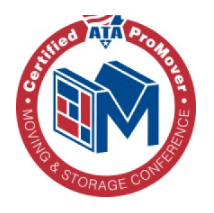Interstate Moving Costs: Is $5000 Enough? How Can You Lower The Price?

Moving can be an exciting yet daunting endeavor, especially involving an interstate move across the country. Apart from the logistical challenges, one of the primary concerns for anyone planning a long-distance relocation is the expense involved.
If you’re in the early stages of planning your interstate move, you’re likely wondering, “How much does it cost to move?” and whether your budget of $5000 is sufficient.
In this article, we’ll delve into the factors that influence interstate moving costs and explore effective strategies to lower them, ensuring a smooth transition to your new home without breaking the bank. Read on!

Interstate Moving Costs: Average Estimates
Being prepared for the costs involved in your interstate move across the country is important. Interstate moving costs can vary significantly based on several factors. Let’s dig deep and understand them all below:
Cost per Mile
One crucial factor that influences the cost to move is the distance between your current location and your new home. A moving truck rental with professional movers is the most cost-effective means to move your property.
These moving truck rental companies often charge an average cost of $0.50 to $2.50 or more per mile. You will have an average cost between $150-$400 for a local move and $750-$2500 for long distances.
Sure, do-it-yourself moves can save you a few bucks. But if you’re not keen on spending hour after hour of packing and unpacking, it is best to employ a rental.
Fuel is also another major factor to consider in your budget. Moving rental trucks will typically get 8-12 miles per gallon, depending on the truck’s size and load on it. A fully-loaded 26-ft truck can drive approximately 8 miles per gallon. An empty 10-ft truck can drive as much as 15 miles per gallon.
You will likely spend a few hundred dollars on fuel costs on top of truck rental fees. Other factors like route complexity can also affect your total moving costs, depending on the moving company you choose.
Cost by Weight and Size
Most moving companies also consider your belongings’ weight, size, or volume. This is usually the case when you transport furniture.
The average cost can range from $0.50 to $1.00 per pound. If by volume, the average cost can range from $1.50 to $3.00 or more per cubic foot.
For a 250-mile transport, the volume of the items in a typical studio apartment will have an average moving cost of $750-$1500, while a 4-bedroom home at the same distance can cost up to $2500.
However, we recommend weight-based computations since the Department of Transportation can easily verify these. A moving cost calculator can help you estimate your average moving cost.
Note that items like cages, aquariums, and specialty items like antiques, safes, or pianos require extra movers and costs. A piano will have an average moving cost of $400 due to its size and fragility.
Make sure to inform your moving service ahead of schedule when special items are involved in the move.
Cost by Distance
Moving car companies usually categorize moves into distance brackets. You have the local move within 100 miles, intrastate moves within the same state, and interstate moves that cover long distances across state lines. The farther the move, the higher the cost due to increased fuel consumption, labor, and other transportation expenses.
Moving around the block is unsurprisingly the cheapest move to make. But if you happen to be moving from one side of a large city to another, it can get more expensive than usual. This can cost an average of $1,710.
A long-distance moving company is the best option when you plan to move beyond 100 miles from your original location. They have the right equipment and knowledge to transport your belongings across the country safely.
Moving cross-country can have an average cost of $4,823. A long-distance move from coast-to-coast can cost up to $10,000.
In terms of time, moving within a city won’t take long if your belongings are already packed and ready to go. Long-distance moves require much more time and effort to ensure all items make it through the long ride with unexpected bumps and sudden shifts in motion.
Also, don’t schedule your move during the peak moving season. This can cost you extra bucks.
Cost by Type of Move (Full-Service, DIY, Hybrid)
Some homeowners don’t hire helpers because they want to cut costs. This should be alright if you move to a one-bedroom apartment with few furnishings. A few friends and family and a big enough vehicle should do just the trick!
However, many renters underestimate the number of packing supplies and the vehicle size needed for the move. Safety concerns can come into the picture too. Moving without hiring movers can be difficult, tedious, and time-consuming for a larger house.
Here are the three common types of moves and their estimated final cost to move you should consider:
Full-Service Move
With full-service movers, every aspect of your relocation, including packing, loading, transportation, and unloading, will be covered.
The cost for a full-service interstate move can range from $3,000 to $10,000, depending on the size of your home and the distance traveled.
Additionally, when hiring a full-service moving company, the licensed and insured moving company will be responsible for compensating any damages, not the homeowner.
DIY Move
A do-it-yourself move involves handling all aspects of the relocation independently. This includes packing, renting a moving truck, and driving to your new destination.
If you’re willing to do all the heavy lifting, maybe with some help from friends and family, you can save a good chunk of your budget. You’ll also have more control over the moving process, which some people prefer.
DIY moves are more cost-effective, with average expenses ranging from $1,000 to $4,000. However, it’s important to consider additional costs such as truck rental, fuel, and lodging.
Hybrid Move
A hybrid move combines elements of both full-service and DIY moves. You can handle tasks like packing or transportation while hiring professionals for others.
The approximate cost of a hybrid move falls between full-service and DIY, ranging from $2,000 to $7,000, depending on the specific services you require.
By understanding the average estimates of interstate moving costs under different categories, you can better plan and budget for your upcoming move.
We suggest requesting quotes from multiple moving companies and comparing their services to help you find the most cost-effective option for your interstate relocation.
Factors Affecting Interstate Moving Costs
Understanding the factors affecting your interstate move across the country will help you make an informed decision and effectively save money.
Below are key elements that can influence interstate moving costs:
Moving Company Selection
Choosing the best interstate moving company can significantly impact the cost of your cross-country move. Different moving companies have varying pricing structures, services offered, and levels of expertise.
So how much does it cost to move by hiring a professional moving company? You can generally expect to pay around $900 – $2,500 for a local move or between $3,000 – $10,000 for most long-distance moving companies.
We highly recommend requesting quotes from multiple moving companies to compare their estimates. While it may be tempting to choose the lowest-priced option, choose reliable interstate moving companies based on factors such as reputation, customer reviews, experience, and the services included in their pricing. You want to avoid potential issues or additional expenses down the line.
Time of Year
The time of year you plan your cross-country move can also affect the overall cost. Moving during peak moving seasons, such as summer months or weekends, often comes with higher prices due to increased demand.
If possible, consider scheduling your long-distance move during off-peak times, such as weekdays or during the fall or winter months. Doing so can potentially result in lower rates and better availability of moving services.
Flexibility with your moving dates can also provide an opportunity to negotiate better deals when hiring professional movers.
Additional Services and Fees
Purchasing add-on services can also influence the average cost of a cross-country move. They may reduce the hassle, but they add to the movers’ cost:
- Packing services (including costs for bubble wrap and wooden crates)
- Unpacking or unloading assistance
- Furniture assembly or reassembly
- Cost of moving specialty items (e.g., pianos or grandfather clocks)
- Removal of packing materials
- Use of a storage unit
- Wrapping and transporting fragile goods
- Moving insurance
- Additional moving personnel
If the moving company allows tipping, customers may offer long-distance movers a standard 10%-20% tip split between the number of persons employed. It’s a good way to show your gratuity for movers who have gone above and beyond for you.
Insurance and Liability Coverage
Protecting your belongings during an interstate move is vital. You will want to consider a moving company that provides at least basic valuation coverage in the contract, offering limited protection for your items based on weight.
However, this coverage may not fully reimburse you for the value of any damaged or lost items. You may consider additional liability insurance coverage if you have valuable or fragile possessions.
According to federal law, interstate movers should provide their clients with either of the two valuation coverage options: Full Value Protection and Released Value Protection.
Full Value Protection is the more comprehensive option and requires the mover to replace items or reimburse you for the item’s current value if they get broken during the move. Basic Released Value Protection covers .60 cents per pound per item.
Insuring a one-bedroom apartment at full value protection will typically cost around $500 to $700, depending on how valuable the items being moved are.
Remember that additional insurance coverage will result in a higher cost of moving. But it provides peace of mind knowing that your belongings are adequately protected.
How to Lower Interstate Moving Cost
Using a comprehensive interstate moving checklist can help you not miss out on important details that could otherwise cost additional expenses.
For older homeowners, although it might be costlier than any type of move, considering specialized moving services for seniors is the safest.
To help you lower a few costs and stay within budget, here are a few tips to try:
Declutter and Downsize
Before you start packing, take the time to declutter and downsize your belongings. Sell, donate, or discard items you no longer use or hold sentimental value. Many cross-country movers even hold garage or yard sales. Doesn’t that sound like a good idea?
Remember, cost factors like how much stuff you move, its overall weight and size, directly affect moving expenses. The less you move, the less you’ll pay. You save money.
Plus, downsizing will also make the packing and unpacking part of your moving process more efficient and organized.
Compare Quotes from Multiple Moving Companies
Obtaining quotes from multiple moving companies is crucial for finding the most cost-effective option. It is unsurprising to find estimates differing by a few hundred bucks!
Reach out to at least three different moving companies and compare. Ensure to provide accurate information about the size of your home, the distance of your move, and any additional services you may require. You can do this with a moving cost calculator too.
If anything seems unclear, ask for clarification. Feel free to inquire about potential discounts or promotions too. Some professional moving services even practice a price-matching policy. This way, you can get the best value for your money.
Consider Moving Container Services
Instead of hiring a full-service moving company, you can opt for portable storage containers that you pack and load yourself. The container company will then transport it to your new location.
This option allows you to move at your own pace and eliminates needing a professional moving crew.
Moving container services are often more affordable and provide added convenience if you require temporary storage during your move.
Plan Your Move in Advance
Start planning your moving date well in advance to allow ample time for research and preparation. Book movers 30-60 days in advance. By booking moving services early, you may have access to discounted rates and cost savings.
Additionally, planning allows you to take advantage of off-peak moving seasons when prices are typically lower.
We suggest creating a detailed timeline and checklist to ensure you complete tasks promptly, avoiding any last-minute rush or unexpected expenses.
Frequently Asked Questions
Got more questions about professional movers and the costs of interstate moving? We’ve got you covered with the following FAQs:
What Is the Most Cost-Effective Way to Move Interstate?
The most cost-effective way to move interstate depends on your specific circumstances and preferences.
Generally, a do-it-yourself move tends to be more affordable. Since you don’t hire interstate movers, you handle all aspects of the relocation yourself, perhaps with the help of friends and family. Renting a moving truck, packing, loading, and driving are all on you.
Another cost-effective option is utilizing moving container services, where you pack and load your belongings into portable storage containers, then transport them to your new location. This option provides flexibility and often comes at a lower cost compared to full-service moves.
How Can I Get an Accurate Estimate of My Interstate Moving Costs?
To calculate moving costs, you need to provide movers with the most accurate information about the size of your home, the distance of your move, any add-on services you require, and any specific concerns, such as fragile or oversized items. Be prepared to answer questions regarding accessibility at your current and future locations.
A local move and a long-distance move will be calculated differently. Most local moves will be estimated based on the number of hours the move will take multiplied by the moving company’s hourly rate. Customers will be charged for add-ons and supplies.
Long-distance moves are usually computed based on the weight of your belongings and the total distance of the trip. Moving companies typically have a set rate per pound and mile.
Do Moving Companies Offer Discounts on Interstate Moves?
Yes, moving companies offer discounts on interstate moves, especially during off-peak seasons or weekdays when demand is lower. We advise inquiring about any available discounts or promotions when requesting quotes from moving companies.
Additionally, some moving companies provide discounts for specific groups such as seniors, veterans, or students. It’s worth asking about these discounts and providing any necessary documentation to avail yourself of potential cost savings.
What Should I Consider When Comparing Moving Quotes?
There are several factors to consider beyond the price alone:
- Look for detailed breakdowns of the estimated cost, including any additional costs or surcharges.
- Consider the reputation and experience of the professional moving company, including their licensing and insurance coverage.
- Assess the services included in the quotes, such as packing, loading, and unloading, as well as the level of customer support and assistance.
- Pay attention to any limitations or restrictions mentioned in the quotes.
Considering these factors and the price, you can make a more informed decision when comparing moving quotes.
Which Additional Services Might Increase My Interstate Moving Costs?
One of the things you often find hidden in the actual cost is the price of moving boxes. We suggest collecting as many free boxes as possible from your workplace or even in local stores to pack your belongings.
Find out the different costs and fees you can consider to save money:
- Packing costs – If a mover uses packing supplies like bubble wrap, mattress covers, TV boxes, and packing paper, they will charge you. Coordinate with your moving company ahead of time so you can opt to purchase packing materials yourself.
- Long carry fees – A moving company can charge you a long carry fee, depending on the size of your belongings, if they can’t park their truck within 100-150 feet of your front door.
- Stair carry fees – A mover will charge you a stair carry fee when your belongings must be carried through several long staircases.
How Much Does it Cost to Rent a Portable Storage Container?
Moving containers are short-term storage units that can be delivered to your house, where you load it up with your belongings, then shipped to your moving location or stored locally or long distance until you’re ready to unpack.
Container sizes range from 7 feet long up to 20 feet. Naturally, larger or multiple containers will cost more to rent and move. For a family house, you will need more than one container.
Most moving container companies do not include labor costs or the cost of supplies. Although, you can hire local movers to help with the loading and unloading as an additional service.
The typical move involves 3 container charges: a drop-off fee, a transfer fee, and a pick-up fee. Costs can add up every time you move the container. The average total cost for local moves with a portable moving container is $400 to $700 for one container.
For interstate moves, the cost to move with storage containers can range from $900 to $4500+. Generally, the longer the distance, the more expensive it gets. We recommend finding a company with nearby locations on both ends of your move for added convenience.
Conclusion
While $5000 may be a starting point, it’s important to recognize that expenses can vary based on several factors. Make sure to declutter and downsize, compare quotes from reputable moving companies, and plan.
With a focus on saving money and being mindful of relocation expenses, you can ensure a smooth and cost-effective transition to your new home.
Related Articles
Moving Out Soon? Your Guide to Start Saving Today

Moving out is a thrilling milestone that brings both excitement and financial challenges. Proper preparation and strategic saving are crucial for a smooth transition to independent living, requiring more than just accumulating a lump sum. Beginning this process requires a thorough approach, from evaluating your current financial circumstances to preparing for lasting stability. By implementing […]
Read MoreFirst Time Moving Out? Your Essential Checklist & Guide

Stepping out on your own for the first time is a thrilling adventure that marks the beginning of true independence. It’s a journey filled with excitement, but it also comes with its fair share of challenges that require thoughtful preparation and planning. Moving from your family home to your own space involves more than just […]
Read More




